ScreenPlay 777 Installer’s Guide
This product requires professional installation. Please contact your local dealer.
1
�
Declaration of Conformity
Manufacturer: InFocus Corporation, 27700B SW Parkway Ave. Wilsonville, Oregon
97070 USA
European Office: Strawinskylaan 585, 1077 XX Amsterdam, The Netherlands
We declare under our sole responsibility that this projector conform to the following
directives and norms:
EMC Directive 89/336/EEC, Amended by 93/68/EEC
EMC: EN 55022
EN 55024
EN 61000-3-2
EN 61000-3-3
Low Voltage Directive 73/23/EEC, Amended by 93/68/EEC
Safety: EN 60950: 2000
February, 2004
Trademarks
Apple, Macintosh, and PowerBook are trademarks or registered trademarks of Apple
Computer, Inc. IBM is a trademark or registered trademark of International Business
Machines, Inc. Microsoft, PowerPoint, and Windows are trademarks or registered
trademarks of Microsoft Corporation. Digital Light Processing is a trademark or reg-
istered trademark of Texas Instruments. Faroudja, DCDi, and TrueLife are trade-
marks or registered trademarks of Faroudja. InFocus and ScreenPlay are trademarks
or registered trademarks of InFocus Corporation.
Ver. 6-1
FCC Warning
Note: This equipment has been tested and found to comply with the limits for a Class
B digital device, pursuant to part 15 of the FCC Rules. These limits are designed to
provide reasonable protection against harmful interference in a residential
installation. This equipment generates, uses and can radiate radio frequency energy
and, if not installed and used in accordance with the instructions, may cause harmful
interference to radio communications. However, there is no guarantee that
interference will not occur in a particular installation. If this equipment does cause
harmful interference to radio or television reception, which can be determined by
turning the equipment off and on, the user is encouraged to try to correct the
interference by one or more of the following measures:
--Reorient or relocate the receiving antenna.
--Increase the separation between the equipment and receiver.
--Connect the equipment into an outlet on a circuit different from that to which the
receiver is connected.
--Consult the dealer or an experienced radio/TV technician for help.
Changes or modifications not expressly approved by InFocus Corporation can void
the user's authority to operate the equipment.
Canada
This Class B digital apparatus complies with Canadian ICES-003.
Cet appareil numérique de la classe B est conforme à la norme NMB-003 du Canada.
Agency Approvals
UL, CUL, NOM, IRAM, GOST, C-tick
Other specific Country Approvals may apply. Please see product certification label.
InFocus reserves the right to alter product offerings and specifications at any time
without notice.
2
�
Table of Contents
Please visit our website at www.infocus.com/service for the latest informa-
tion and tools.
Positioning the projector
Video connections
Shutting down the projector
Using the remote control
Optimizing video images
Customizing the projector
Using the menus
Picture menu
Settings menu
Replacing the projection lamp
Installing a lens
Appendix
Red LED behavior and projector errors
Projector placement calculator based on screen size
Ceiling mount information
Source compatibility
RS-232 terminal specifications
6
7
8
9
10
10
11
12
16
19
22
22
22
23
25
26
27
3
�
Important Operating Considerations
Place the projector in a horizontal position, with no more than 15
degrees forward or backwards tilt. See “Positioning the projector” on
page 6.
Locate the projector in a well-ventilated area without any obstructions
to intake or exhaust vents. Do not place the projector on a tablecloth or
other soft covering that may block the vents.
Locate the projector at least 4' (1.2 m) away from any heating or cooling
vents.
Use only InFocus-approved ceiling mounts.
Use only the power cord provided.
Refer to this manual for proper startup and shutdown procedures.
In the unlikely event of the lamp rupturing, discard any edible items
placed in the surrounding area and thoroughly clean the area along all
sides of the projector. Wash hands after cleaning the area and handling
the ruptured lamp. This product has a lamp which contains a very
small amount of mercury. Dispose of it as required by local, state or
federal ordinances and regulations. For more information see
www.eiae.org.
Follow these instructions to help ensure image quality and lamp life over
the life of the projector. Failure to follow these instructions may affect the
warranty. For complete details of the warranty, see the warranty section at
the end of this Installer's Guide.
4
�
Connector Panel
The projector provides eight discreet video connectors:
one red-green-blue RCA (SD/ED/HD component)
one red-green-blue BNC (SD/ED/HD component)
two S-video
one composite RCA
one M1-DA (HD, RGBHV, HD component, DVI, and computer)
one VESA (HD, RGBHV, HD component, and computer)
one D5 (SD/ED/HD component, RGB SCART)
It also has a mini-jack input for a Niles or Xantech-compatible IR repeater
and an RS-232 connector for serial control. The Command Line Interface
(CLI) specifications and commands are listed in the Appendix starting on
page 27.
Two 3.5mm mini-jack triggers provide 12 volt current. Screen trigger pro-
vides a constant output while the projector is on. For example, if you con-
nect your projection screen to the screen trigger, when you turn on the
projector the screen will move down; when you turn the projector off, the
screen will return to the storage position. Screen mask provides a 4:3 aspect
trigger. When you select 4:3 in the Aspect Ratio menu or from the Resize
button on the remote, a 12v signal will be sent after a five second delay. Use
this trigger for screens with 4:3 aspect curtains. When you switch back to
16:9 format, the curtains open to reveal the entire screen.
For details on each connector type and their inputs, see page 26.
screen trigger
screen mask
component
video (BNC)
component
video (RCA)
serial
(RS-232)
status
component 6
component
D5
8
video
7
s-video
5
4
Pr
Pb
Y
3
Pr
Pb
Y
serial control
vesa 2
IR in
IR in
M1-DA 1
D5
video
composite
video (RCA)
12v triggers
S-video
VESA (HD15)
DVI (M1-DA)
IR input
+12v
ground
3.5mm mono plug for
12 volt current
connection
to screen relay (see screen manufacturer
for details)
5
�
Positioning the projector
There are a number of factors to consider when determining where to set up
the projector, including the size and shape of your screen, the location of
your power outlets, and the distance between the projector and the rest of
your equipment. Here are some general guidelines.
1 Position the projector on a flat surface at a right angle to the screen.
The projector must be within 10 feet (3 m) of your power source. To
ensure adequate cable access, place the projector at least 6 inches
(0.15m) from a wall or other objects. Place the projector at least 5.6 feet
(1.7 m) from the projection screen.
If you install the projector on the ceiling, refer to the installation guide
that comes with the Ceiling Mount Kit for more information. To turn
the image upside down, see page 16. InFocus recommends use of an
authorized InFocus ceiling mount. The Ceiling Mount Kit is sold sepa-
rately.
If you do not install the projector on the ceiling, or you install it on the
ceiling with a less than 90% offset, please remove and discard the metal
light shield that is attached to the lens collar by pulling it off.
2 Position the projector the desired distance from the screen.
The distance from the lens of the projector to the screen, the zoom set-
ting, and the video format determine the size of the projected image.
Go to www.infocushome.com/support for a complete image size calcula-
tor.
6
�
Table 1: Video connections
Video Game
VESA
Composite video
S-video
Component video
VESA 2
Video 7
S-video 4, 5
Component 3, 6
For a complete list of compatible sources, see page 26 of the Appendix.
Video connections
You can connect VCRs, DVD players, camcorders, digital cameras, video
games, HDTV receivers, and TV tuners to the projector. (You cannot directly
connect the coaxial cable that enters your house from a cable or satellite
company; the signal must pass through a tuner first. Examples of tuners are
digital cable boxes, VCRs, digital video recorders, and satellite TV boxes.
Basically, any device that can change channels is considered a tuner.) Audio
must be provided by your own speakers, as the projector has no separate
audio controls. If there is more than one output, select the highest quality
one. DVI, Component video and RGB (M1, HD15) have the best quality, fol-
lowed by S-video, and then composite video.
Table 1: Video connections
Input signal
Connector
Standard Broadcast TV (not
HDTV), via cable, digital
cable, satellite TV, DirectTV
Component video
S-video
Composite video
HDTV
DVD
VCR
Component video
VESA
DVI
Component video
S-video
Composite video
Composite video
S-video
Component video
Connector label
on projector
Component 3, 6
S-video 4, 5
Video 7
Component 3, 6
VESA 2
M1-DA 1
Component 3, 6
S-video 4, 5
Video 7
Video 7
S-video 4, 5
Component 3, 6
Video Camera
Composite video
S-video
Video 7
S-video 4, 5
7
�
Shutting down the projector
Power Save
The projector has a Power Save feature in the System menu that automati-
cally turns the lamp off after no signals are detected for 20 minutes. After 10
additional minutes with no signal, the projector powers down. If an active
signal is received before the projector powers down, the image is displayed.
You must press the Power button to display an image after 30 minutes have
passed.
Turning off the projector
To turn off the projector, press the Power button on the remote. The lamp
turns off and the LED blinks green for about one minute while the fans con-
tinue to run to cool the lamp. When the lamp has cooled, the LED lights
green and the fans stop. Unplug the power cable to completely power off
the projector.
8
�

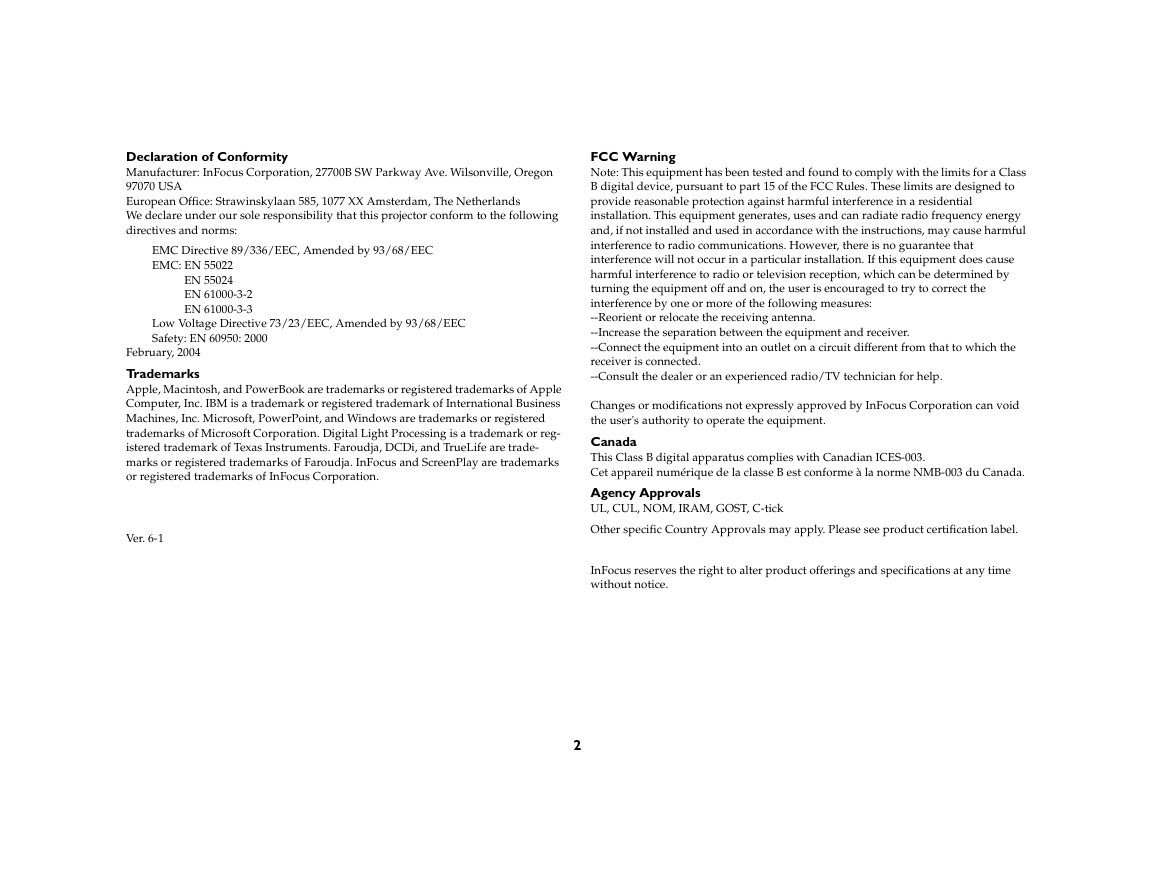
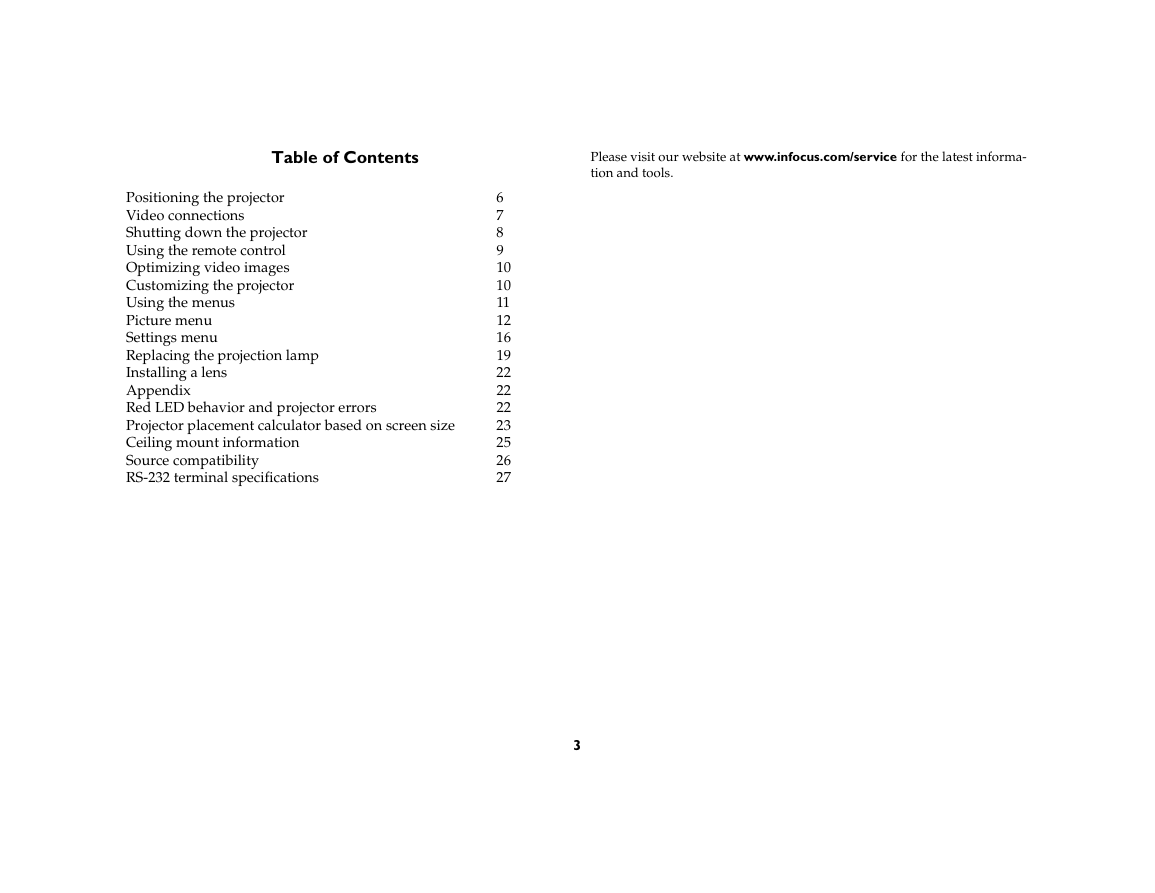
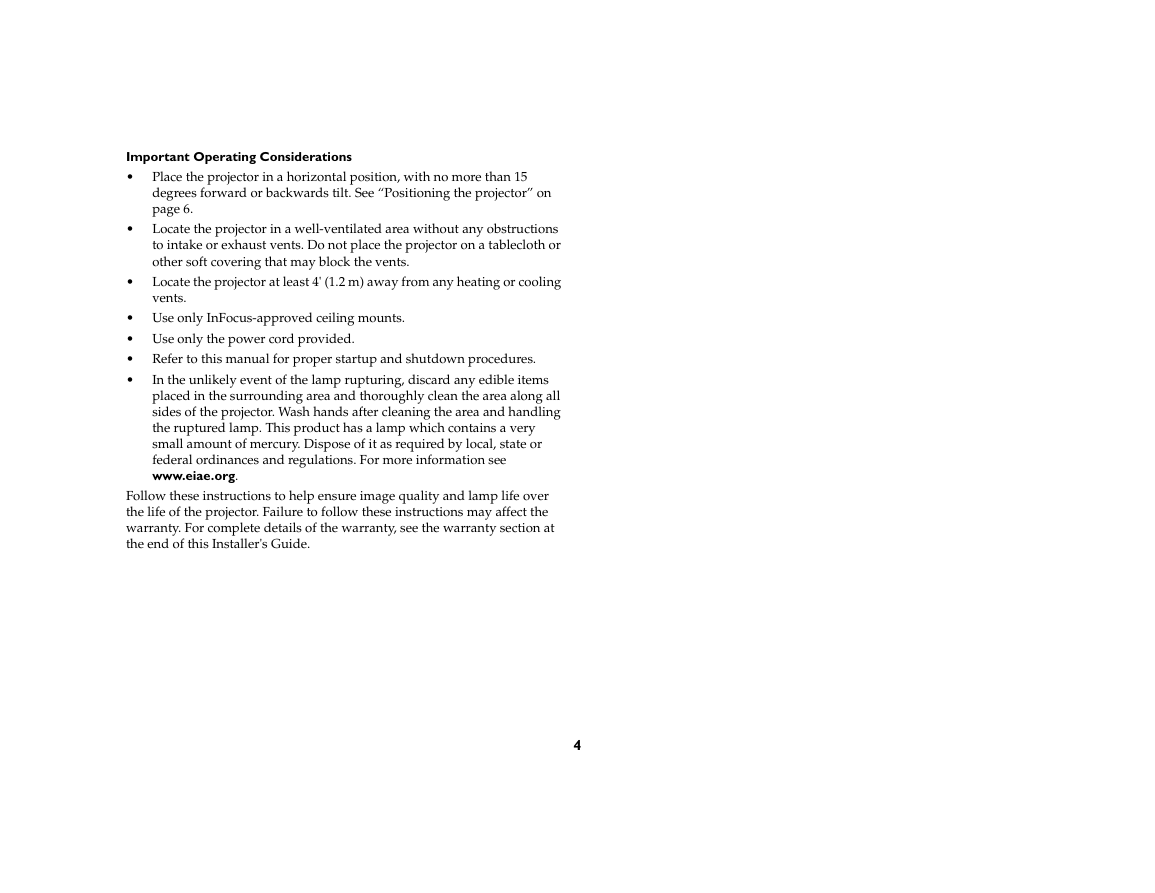
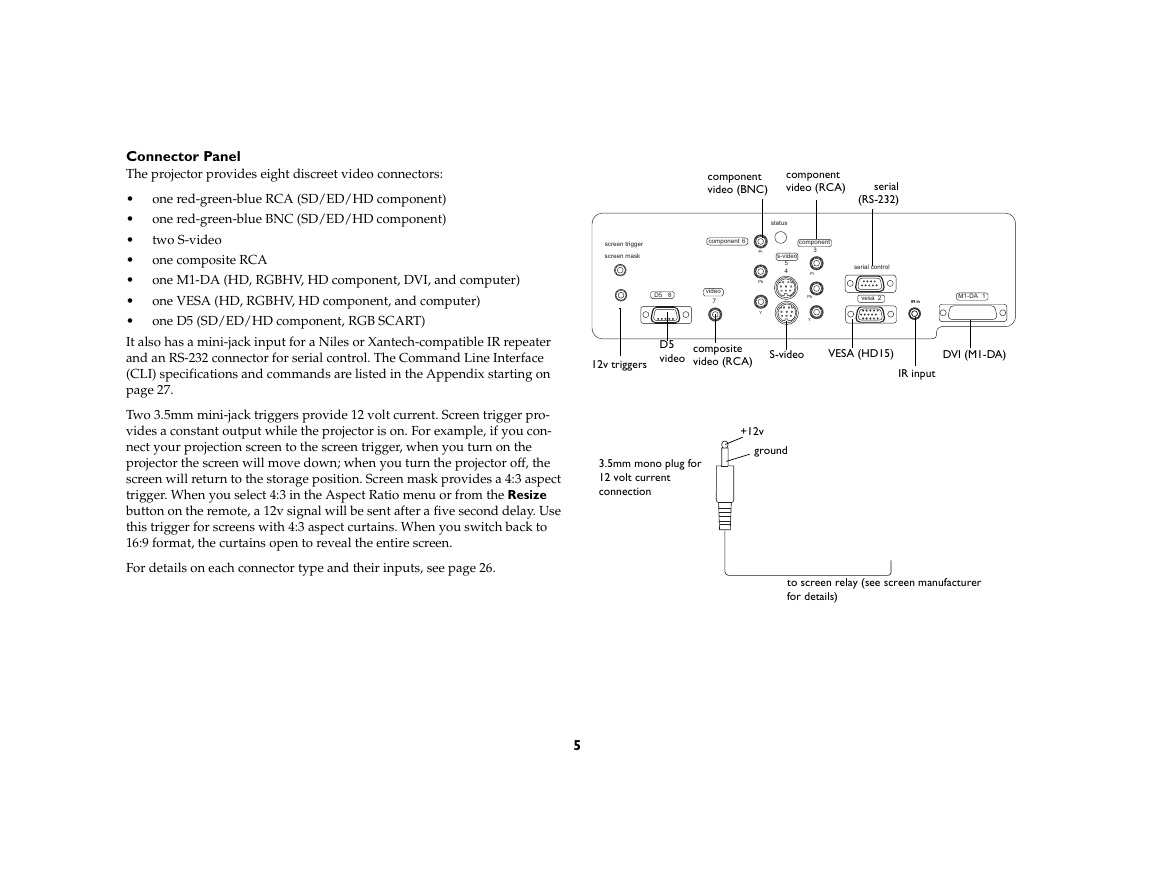
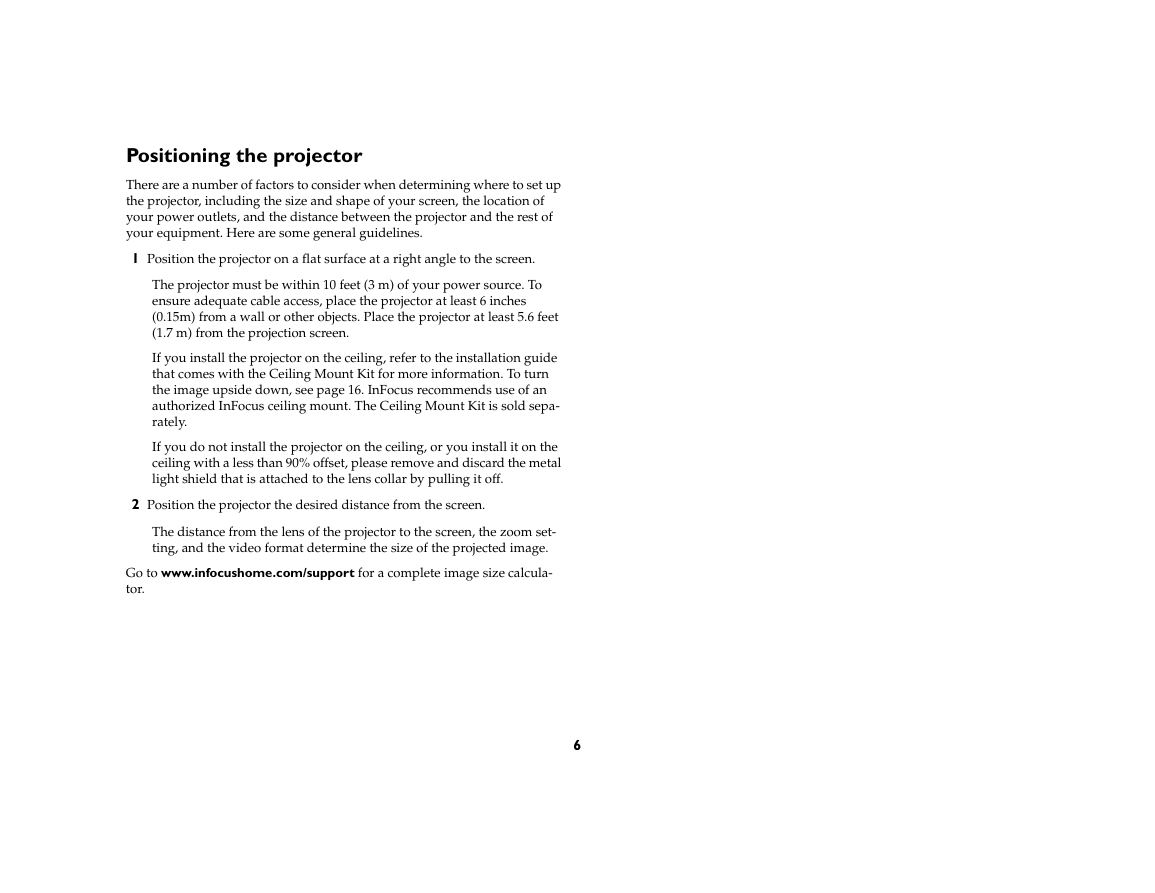
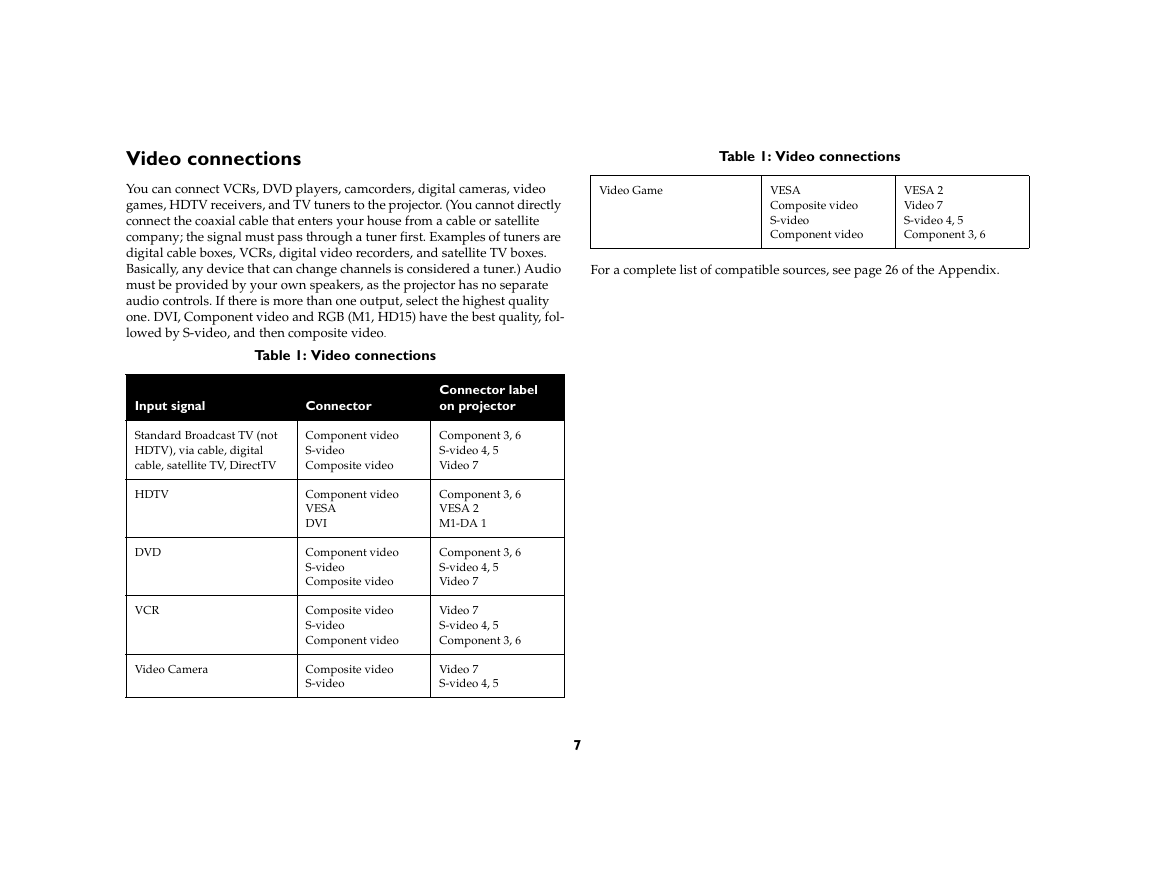
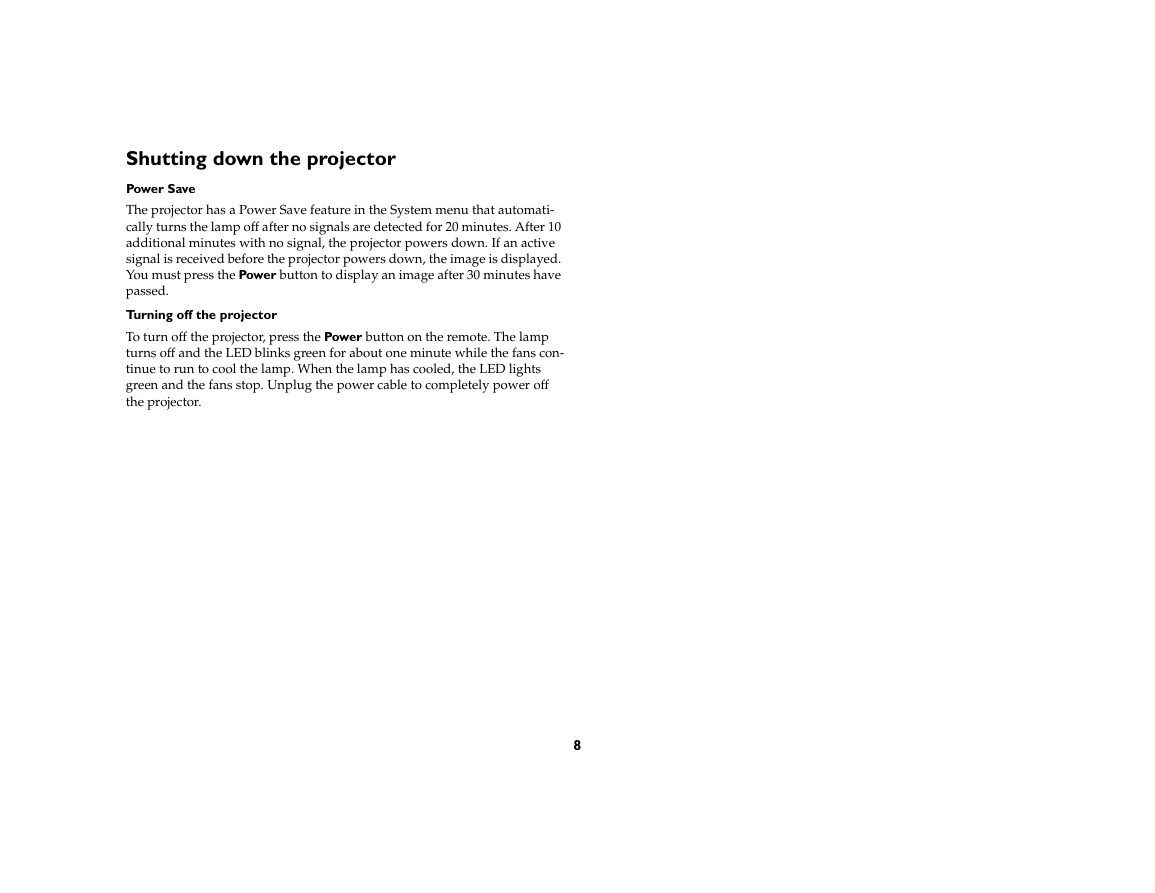








 2023年江西萍乡中考道德与法治真题及答案.doc
2023年江西萍乡中考道德与法治真题及答案.doc 2012年重庆南川中考生物真题及答案.doc
2012年重庆南川中考生物真题及答案.doc 2013年江西师范大学地理学综合及文艺理论基础考研真题.doc
2013年江西师范大学地理学综合及文艺理论基础考研真题.doc 2020年四川甘孜小升初语文真题及答案I卷.doc
2020年四川甘孜小升初语文真题及答案I卷.doc 2020年注册岩土工程师专业基础考试真题及答案.doc
2020年注册岩土工程师专业基础考试真题及答案.doc 2023-2024学年福建省厦门市九年级上学期数学月考试题及答案.doc
2023-2024学年福建省厦门市九年级上学期数学月考试题及答案.doc 2021-2022学年辽宁省沈阳市大东区九年级上学期语文期末试题及答案.doc
2021-2022学年辽宁省沈阳市大东区九年级上学期语文期末试题及答案.doc 2022-2023学年北京东城区初三第一学期物理期末试卷及答案.doc
2022-2023学年北京东城区初三第一学期物理期末试卷及答案.doc 2018上半年江西教师资格初中地理学科知识与教学能力真题及答案.doc
2018上半年江西教师资格初中地理学科知识与教学能力真题及答案.doc 2012年河北国家公务员申论考试真题及答案-省级.doc
2012年河北国家公务员申论考试真题及答案-省级.doc 2020-2021学年江苏省扬州市江都区邵樊片九年级上学期数学第一次质量检测试题及答案.doc
2020-2021学年江苏省扬州市江都区邵樊片九年级上学期数学第一次质量检测试题及答案.doc 2022下半年黑龙江教师资格证中学综合素质真题及答案.doc
2022下半年黑龙江教师资格证中学综合素质真题及答案.doc